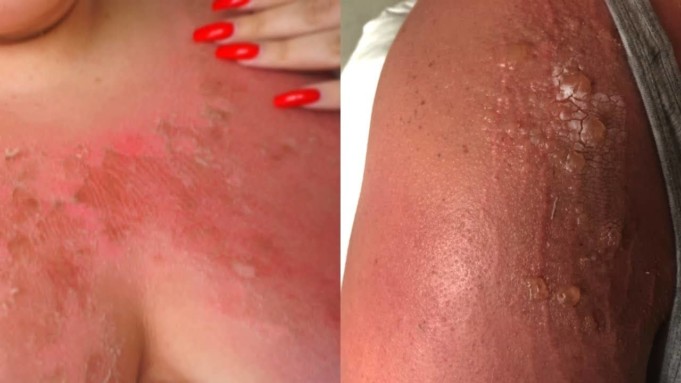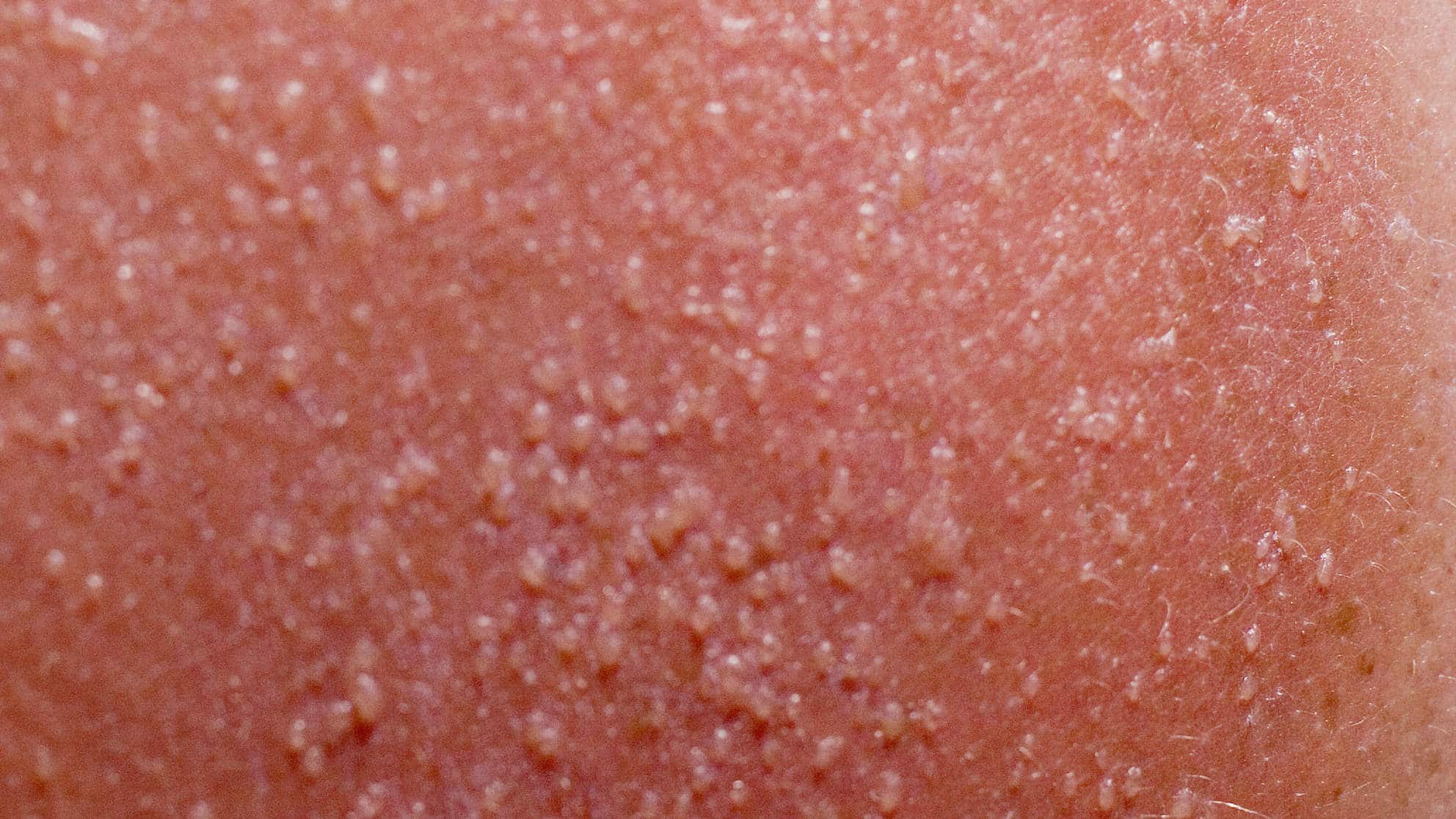The sun is no doubt one of the most beautiful parts of nature. But, is it possible for something associated with happiness, relaxation, and everything fun to be poisonous? Let’s talk about sun poisoning.
Nobody wants to stay indoors on a sunny day when there’s so much fun to be had. However, spending too much time in the harsh sun without any form of protection can lead to a wide range of summer health hazards, starting from mild dehydration, to causes of heat exhaustion, or even worse, heatstroke.
Not to forget, there’s also the sure threat of sunburn— regardless of your best and continuous efforts to diligently cover up your skin with sunglasses, hats, and SPF.
There is nothing known as a “good” sunburn— but we will not deny the existence of a very bad one. Cases of severe sunburn can turn into a red, ultra-painful, blistery experience as well as some flu-like symptoms.
Because of all these severe symptoms, Harsh cases of sunburns has earned itself a colloquial nickname of sun poisoning.
Sun poisoning may sound very scary because nobody wants to get poisoned, but note that it isn’t exactly a medical diagnosis, neither does It have anything to do with an actual poison. So what exactly is sun poisoning? It’s just a lay term for a really, really terrible sunburn.
Whether you decide to call it a bad sunburn or a severe case of sun poisoning, below are most of what you need to know about treating and protecting your skin from sun poisoning.
Common symptoms
It is not surprising that sun poisoning shares a lot of symptoms with the regular sunburn, namely blistering, redness, and pain in areas where the skin is exposed directly to the sun’s UV rays.
But asides the above symptoms, severe cases of sunburns can also cause a swelling of the affected skin areas or even flu-like symptoms, such as fever, headaches, or nausea.
In most cases, you’ll begin to notice the symptoms of sunburn within two or three hours of being out in the sun (depending on the heat intensity), but for sun poisoning it may not show up on your skin for up to one day or longer, making it difficult for you to identify the problem early.
What exactly does sun poisoning look like?
When you see sun poisoning, you will recognize it as a very painful-looking sunburn. Asides the expected popular shade of lobster red that comes with severe sunburn, you might develop a rash or even blisters.
If you have any underlying skin conditions or immune disorders, you may also end up dealing with photodermatoses.
Sun poisoning treatment
You don’t need an antidote since there is no actual poison in this case. The very first and most important thing you must do when you notice any sunburn— mild or severe —is to get a shaded shot where you can hide from direct sun exposure. Better still, get back into your house.
Once you are out of the sun, you can assess the level of damage done. You may feel like taking a shower and drinking some water is enough to cool you down but in cases of extreme blistering or if there are symptoms of dehydration make sure to visit a doctor who can quickly examine, assess the condition, and treat the symptoms.
There may be severe cases where there will be a need to treat the dehydration. If the blisters from your sun poisoning cover a large portion of your skin, it is best that you see a doctor immediately.
In cases of a more mild sunburn, you may not need to worry much as it is probably something you can treat at home. To treat mild cases of sunburn, simply take a cool shower or do a cold compress to help relieve some of the pain and reduce the temperature of the burned skin area.
You may have to consider building a good relationship with aloe vera gel because it can help provide a cooling effect that is capable of easing symptoms of sunburn.
Cold milk compresses are great as well because they can provide some relief as the lipids in milk can be quite soothing to the skin.
An over-the-counter pain reliever isn’t a bad idea too. Options like ibuprofen may also help to tide you over pending when the sunburn symptoms subside— which is usually within a couple of days. Do not be shocked if notice that your sunburn starts to peel.
Water is your best friend, especially in hot weathers. Drink as much water as you can, since sunburns and sun poisoning can both cause dehydration.
Sun poisoning prevention
Since we have pointed out that sun poisoning at its core is really just a miserable sunburn, all you need to do is follow some standard sun protection tips to avoid sun poisoning.
Cover all exposed skin areas with a broad-spectrum sunscreen that has an SPF of 30 or above. This kind of sunscreen is a wise investment as it protects you from UVA and UVB rays.
Make sure that you’re using not more than a shot glass size amount of sunscreen for your whole body and as much as a teaspoon-size amount for your neck and face, and top up the sunscreen every two hours.
Also, remember to put the sunscreen on sneaky areas such as your scalp and ears as they are very easy to miss.
Consider buying some nice sun-protective clothing with UPF (such as SPF for fabric) built-in, to help limit your sun exposure on days when those UV rays are the strongest, most especially between the hours of 10 a.m. and 4 p.m.
Sun poisoning on the lips
Even though you feel like you’re fully prepared to defend yourself against sun poisoning, you just might not be paying attention to some areas of your body that can also get affected by direct exposure to sunlight.
When you decide to go shopping for sunscreen, do not forget to think about your lips. When you forget to invest in a lip balm with a significant amount of SPF, you may end up dealing with sun blisters on your lips after excessive exposure.
If you ever get burned on your lips from exposure to sunlight, generally the poisoning blister will heal on its own, but the tips below will help to hasten the healing process.
Let it be
As we earlier mentioned, tiny, unbroken lip blisters usually end up healing on their own with time. To hasten up the process of healing, reduce your exposure to direct sunlight.
Also, try to avoid touching with the blister every now and then, and keep the area clean and dry. Unless the blister on your lip is extremely huge, do not try to pop it.
An open blister on your lip could fester and eventually get infected, which will require some extra treatment and a longer time for healing.
Keep it clean
Since the blister is on the lips, you may not consider bandaging as it could present a challenge. What this would mean is that it is essential to keep the blister clean.
Antiseptic wipes are a great wash to clean the burns, but be sure to look out for the ingredients in the wipes. There are some antiseptic ingredients that can be harmful when swallowed and should not be used on the mouth.
You have to avoid further irritation to the blisters or burn and to do this, you must avoid lotions and petroleum-based products that contain benzocaine or lidocaine.
Ease the pain
Nearly all types of burns will cause some painful swelling of your skin. To reduce this swelling and pain, as well as to ease some of the discomforts that comes with burns, take aspirin or ibuprofen.
You can also apply corticosteroids, cooling gels, or antihistamines to help ease the burn pains and moisturize your skin. Aloe vera gel can also be used for pain relief on your sunburned lips.
People then to believe the harshness of alcohol will help dry out blisters, but that is wrong. Avoid moisturizers burnt areas with alcohol to prevent any further irritations.
Apply antibiotic
To make the healing process of your burnt lips a lot easier, purchase an antibiotic cream like bacitracin or polymixin. Before applying any of these creams, clean the blister probably and dry it completely.
These ointments or creams are used for the prevention of infection in wounds. Avoid any antibiotic cream that contains alcohol or iodine as they will delay healing.
Drain it
We have mentioned earlier that draining the blisters shouldn’t be considered, but there is an exception to that rule.
If the sun blister on your lip is a huge one, there is a possibility that it will pop without your help. If it doesn’t pop and you feel uncountable, you may choose to drain it once and for all. To drain a massive blister, all you need to do is sterilize a needle with alcohol.
Once that is done, gently poke the blister, creating a tiny little hole. After draining the blister, make sure to clean the area and pat it dry. It is essential that to keep the flap of skin covering the drained blister intact to protect the fresh skin growing under.
Sun poisoning shouldn’t ruin your summer, get all the protection you need and have as much fun as you can.
Remember, you can tell you about your experience with sunburns, or share DIY recipes for protection against sunburns in the comments section.













